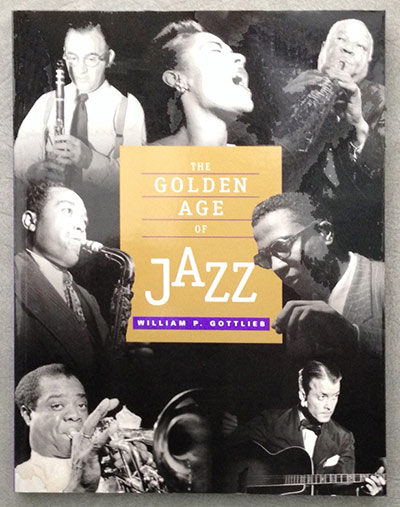
My father, William Gottlieb, calls the decade from 1938—1948, the years he was photographing jazz musicians, “The Golden Age of Jazz”, because at that time all three leading jazz genres—big band, Dixieland and be-bop—were being played at the very highest level. I call today the Golden Age of Photography for the same reason: every genre of photography is producing images at the very highest level, plus more people than ever before—by far—are taking pictures.
When someone refers to a period as the “Golden Age” of one thing or another, it’s usually a good time to don your skeptical spectacles. “Golden Age” declarations are, likely as not, infused with nostalgia, limited perspective, self-validation or just plain ignorance.
In some cases, “Golden Age” designations are surely justified. Who would dispute that the “Golden Age of Movie Musicals” was the 1940s and 50s? Or that the “Golden Age” of the illustrated magazine was also the 1940s and 50s, when Life, Look and others were at their pinnacle? My father argued that the decade from 1938 to 1948 was “The Golden Age of Jazz,” which is the title he gave to his book of photos and essays. These judgments carry extra weight because they have the benefit of hindsight.
Was the late 1980s the start of the Golden Age of Photography, as Weston Naef (quoted above) suggests? Golden Age declarations about the recent past inevitably lack objectivity and perspective. That’s all the more true when talking about the present. Even so, I feel certain that we are living in the midst of still photography’s “Golden Age” RIGHT NOW.
During every period of photography’s 175+ year history, you’ll find great photographers and great images. Great photographic styles have been developed. Great visual stories have been told. There’s no time since photography was first invented that it hasn’t had a major impact on the culture and consciousness of people around the world. So why do I feel sure that now is photography’s Golden Age?
For one thing, infinitely more people are taking more pictures than ever before. For the first time in history, nearly everyone carries a camera (in one form or another) all the time and most are putting it to use. The astonishing output of pictures captures every aspect of our world, from nature’s magnificence, to war’s brutality, to animals’ cuteness, to endlessly fascinating human faces and conditions… not to mention the daily billions of ordinary snapshots of ourselves and everything we see and do. But it’s not just a matter of quantity—the number of quality images has never been greater. Hardly a day goes by that I’m not dazzled and touched by what I see – images of great beauty, power, drama, heartache, or surprise.
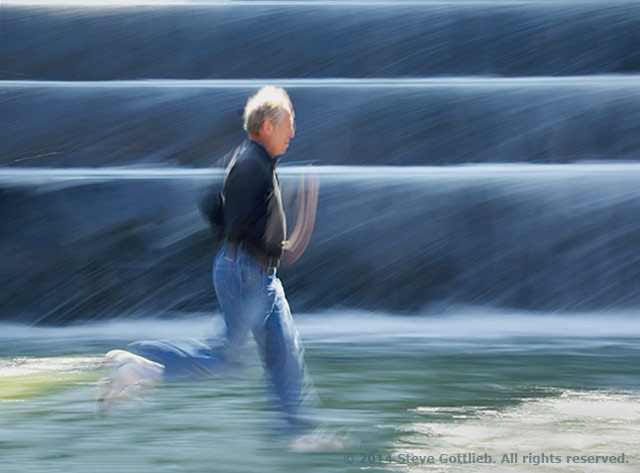
Before the LCD era, panning with the subject started with educated guesswork and then, generally, lots of images were taken at different shutter speeds in the hope of getting the desired effect. Now you can do all manner of tests photos, check the LCD, and be sure of getting exactly what you want.
My Golden Age designation is based on more than quantity and quality. New imaging tools have enabled photography to expand its stylistic range. Straight imagery now shares the stage with all manner of digitally manipulated images. Photographers routinely encroach into territory once occupied solely by painters or photo darkroom masters. Photographers now mimic impressionist painters and abstract expressionists, photo realists and photo surrealists…or you name it. And photographers are using these (relatively) new tools to make their own distinctive creative statements that may have no category.
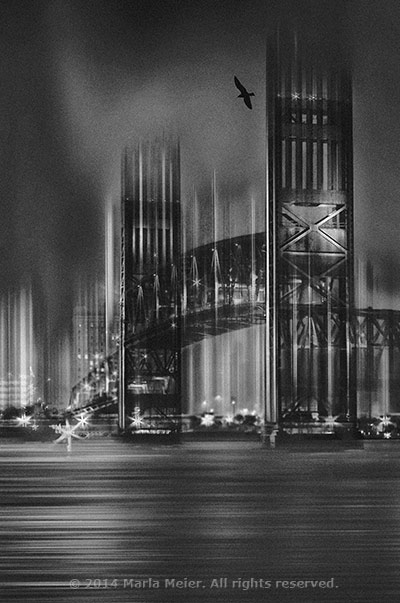
Marla utilized many different tools to create this manipulated image of the Main Street Bridge in Jacksonville, Florida. I follow the “rule of the gut.” Ask yourself if the manipulated look hits you in a positive or negative way?
Still another reason to say this is the Golden Age: photo equipment, from digital capture to digital manipulation to the latest tools for lighting and such, have given amateurs power to equal the quality, if not the consistency, of even top professionals (and without breaking the bank). In a recent Popular Photography magazine photo contest not a single winner was a professional. Can you imagine amateurs taking home all the honors in an open sports competition, or in music, or dance, or architecture, or law, or you name it? I’ve been judging photo contests for decades; each year, the quality and range of work are more impressive. Today is more than just the Golden Age of Photography generally, it’s also the Golden Age of the Amateur.
It’s also a “Golden Age” in terms of image dissemination. We get our work in front of more eyeballs than ever before. A glance at Facebook and other photo sharing sites has to make one wonder how many hours folks spend making—and looking at—pictures. Clearly, the explosion of imagery combined with social media has tapped into a primal desire to share moments of our lives with family, friends, and even the world at large.
Finally, a few other nuggets of the Golden Age… Never before has there been such an abundance of photo workshops and talented workshop instructors, plus major photo events at which clusters of photo experts join together for a few days to share information and passion. And never before have there been so many camera clubs, not to mention the new phenomenon of photo meetup groups. Add to that, there’s online training galore. No matter your location and budget, you can access great photographic training, inspiration and camaraderie.

Mixing ambient light and flash used to be a bit complicated. Today’s flash all have TTL capabilities that make a photo like this—the ambient light is on the left, flash fill on the right. It’s quite simple.
Celebrating a “Golden Age” doesn’t require viewing it through gold-colored glasses. Even the most golden “Golden Age” can have its tarnish. Several developments cause me disquiet.
~ For a variety of reasons, which include the talents of amateurs armed with professional equipment and techniques, the surfeit of inexpensive stock images and a tough economy, among others, this is not the “Golden Age” of professional photography. Making a living making pictures has never been more challenging.
~ Many of us are addicted to speed (the pace, not the drug), and enamored with the power of digital tools (we’ll fix it in Photoshop), so we rush through the act of photographing. From my perspective as photography teacher, I see many people engaged in a kind of photographic blitzkrieg. We’re not taking the time to smell the roses we photograph.
~ While there are more, far more, pictures to look at than ever before, my sense is that we devote far less time than ever looking at individual images. How many seconds do you spend looking at most pictures? (Getting through my daily FB timeline is difficult if I open all the images and links.) In years’ past, many images became imprinted on our brain, and some became iconic. Now, we virtually “speed read” images, which necessarily erodes the power of images to touch us deeply. It’s like having more great chefs than ever, but fewer people savoring the food as they once did. [Given shortened attention spans, do people read extended articles about photography like this one?]
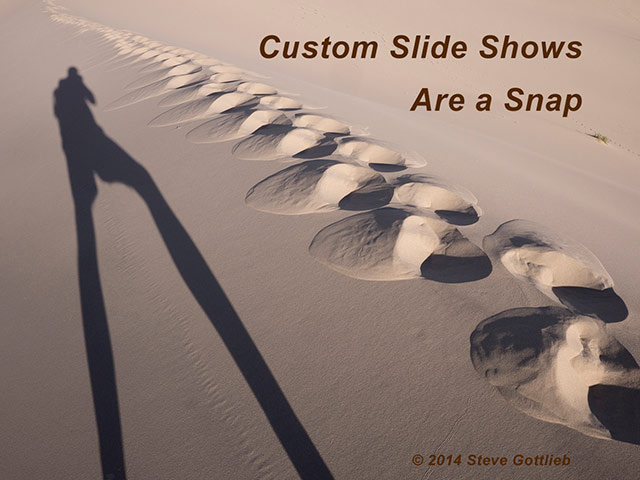
Creating custom slide shows was once the province of slide show producers. Now, with PowerPoint and similar programs, you can easily do it yourself. Adding text and creating special effects of all kinds is a breeze. And changing the order of the images, which used to be a major pain in the days of slides, now can be done in seconds. The days when we dreaded having to sit through a family member’s dreary slide show are, for the most part, over.
~ We once believed that pictures generally represented what was actually in front of the camera. No more. In the world of nature photography for example, photographers used to work patiently to capture moments that were dramatic or beautiful and real. Nowadays, nature photos increasingly levitate beyond the real world. We’re creating a natural world that exists at some exaggerated level of intensity. Eye-popping – yes. I like it – yes (at least much of the time). Still, it is with some regret that I watch photography drift away from its reality moorings.
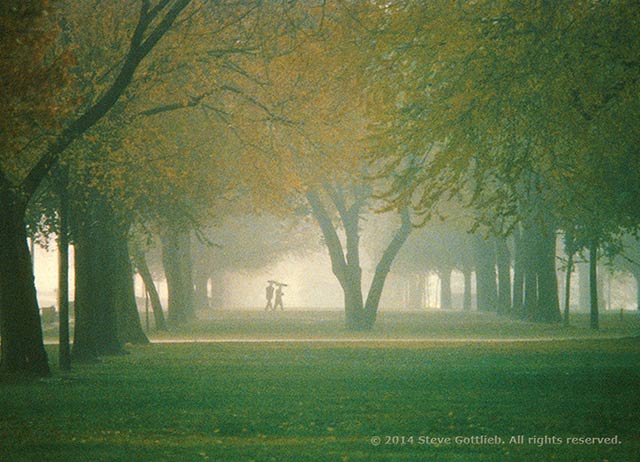
Capturing moody atmospherics like this used to take luck or patience, often both. Now, digital tools make it relatively easy to generate atmospherics that weren’t there and that’s often done in exaggerated form.
For the photographer, nature is becoming what it’s always been for the painter; a starting point – an inspiration. A subject to be interpreted and (usually) glorified, not simply recorded. This is not just true of nature images; the same is happening everywhere across the photographic spectrum.
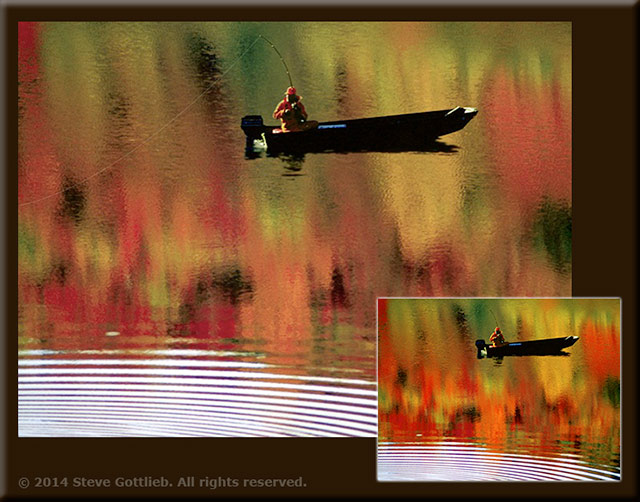
My original fall foliage image of the Susquehanna River had no boat; I threw a rock in the water to create some ripple “action.” The shot became dramatically better when I merged it with an ordinary photo of a fisherman. One plus one equaled far more than two.
Note: Photographers love the saturation tool, but when it’s overused (see photo right bottom corner), I find it distracting and off-putting. I prefer nature images that look real.
Despite these concerns, I am thrilled to live in this era – thrilled to be making pictures, thrilled to be digitally editing pictures, thrilled to view other photographers’ pictures, and thrilled to share what I know with those interested in improving their images. It’s definitely a Golden Age… at least for me.
Opinion Piece by Steve Gottlieb
Article and photos: © 2015 Steve Gottlieb. All rights reserved.




Leave a Reply